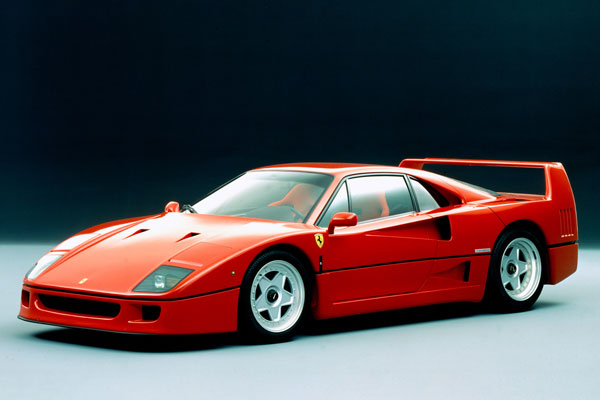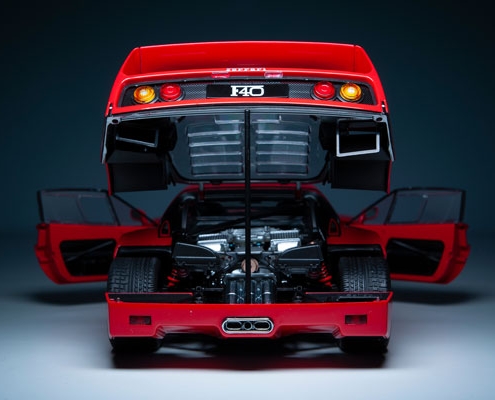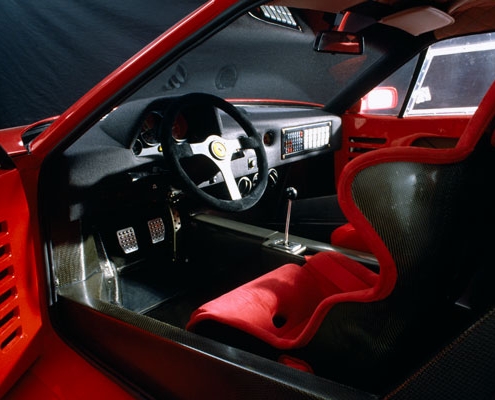Ferrari F40
Debuting in 1987, the mid-engine, rear-wheel-drive F40 was built as a celebration of Ferrari’s 40th anniversary. It was also the last car that the company’s legendary founder, Enzo Ferrari, would personally approve before his death in 1988.
So, even before you delve into the specifications, it is already something a bit special.
However, it was also the most-powerful and fastest car Ferrari had ever developed to that point (another big tick of approval). And it looked like it too, with a presence that suggested it could be a real track monster if pushed.
Its construction confirmed that feeling. The body was ultra-light and made from tough Kevlar and carbon fibre that was integrated with a tubular steel platform chassis. Lifting the rear and front bonnet/engine cover exposed the entire tyre and wheel set-up, revealing that the F40 was, for all intents and purposes, an open-wheel race car that someone had thrown a body over.The engine – nicely protected by a clear material known as Lexan that also acted as the rear window – was a 2.9-litre, twin-turbo V8, that kicked out 352kW and 578Nm. A derivative of the engine powering Ferrari’s 288 GTO Evoluzione, the engine was tweaked and modified to make it lighter and more potent and together with the car’s excellent aerodynamic characteristics (that included the famous, monster rear wing) the F40 could deliver sparkling performance figures of 0-100km/h in 4.1 seconds and a top speed of 324km/h.
The racing car feel carried over into the interior that was – when compared to its contemporary supercar rivals – pretty spartan. There was no audio system, no carpets, no leather, no power steering or electronic devices, and doors opened via a latch on the outside and a pull-cord on the inside. It was fitted with wind-down windows, a rudimentary climate control system and . . . well, that’s about it.
Initially, just 400 of the F40 were and were on sale for $US400,000 each. Demand was strong though, and production eventually reached more than 1300 units.
If you’re interested in getting your hands on one now, you’ll need a good deal more than $US400,000 but, perhaps surprisingly, not as much as you might think.
With so many being made (it’s all relative of course, as 1300 barely qualifies as ‘mass production’) they are not as rare as some of their supercar brethren.
You’ll still have to dig deep and expect to pay something approaching $2million or more depending on the car.
While that is certainly a big bucket of coin, for a spectacular F40, it might just be worth it.
Source: Motor Trader e-Magazine (February 2021)
12 February 2021













